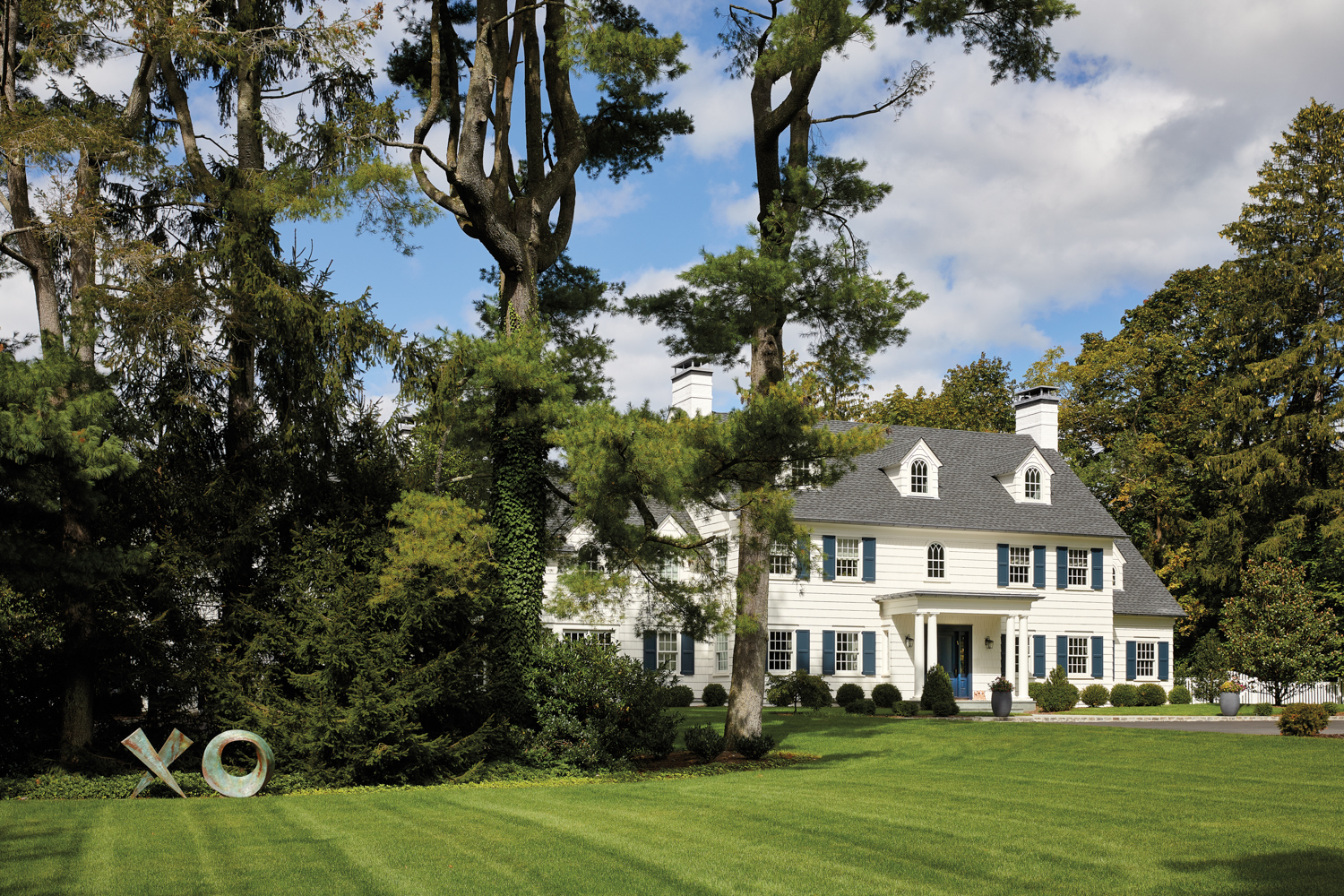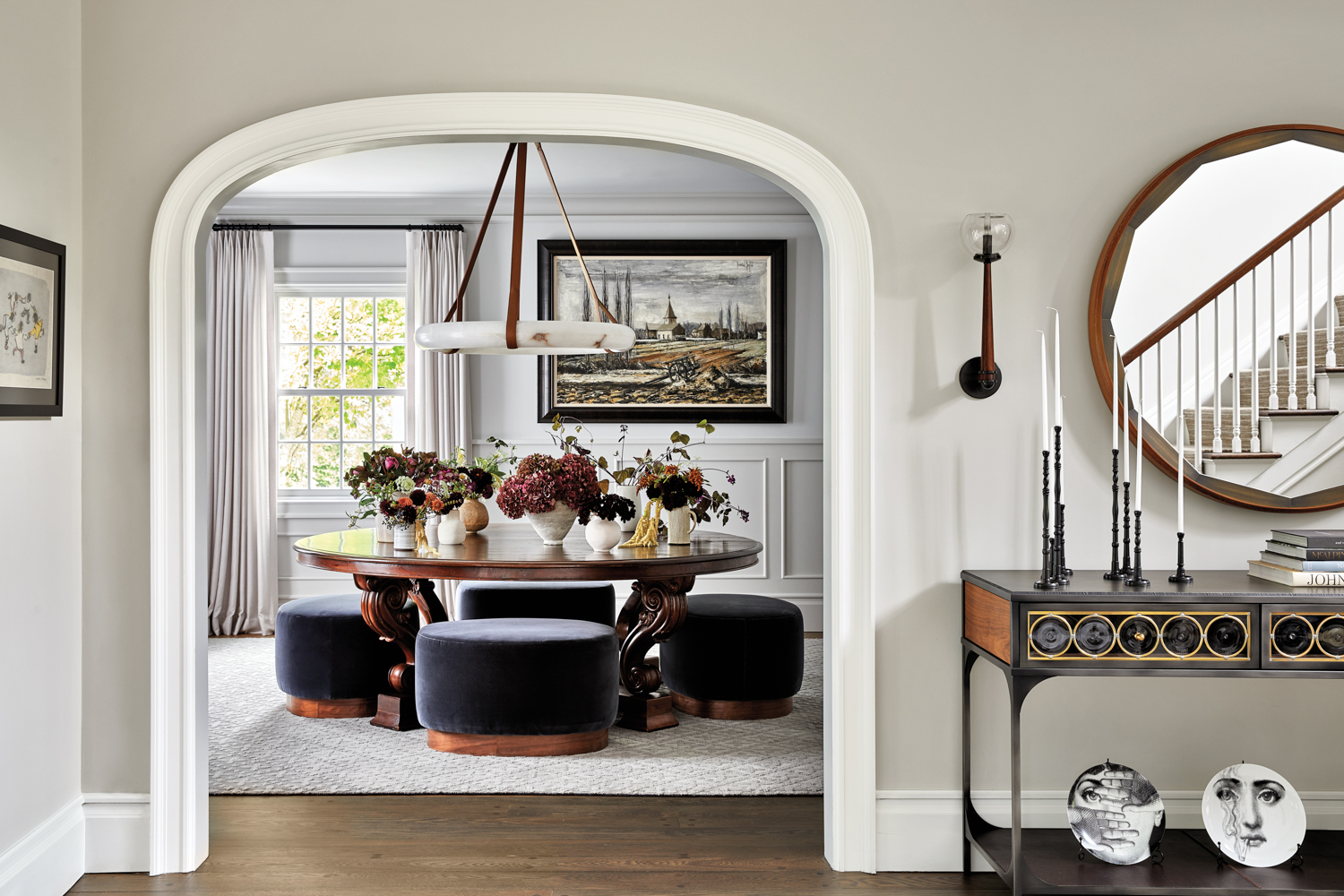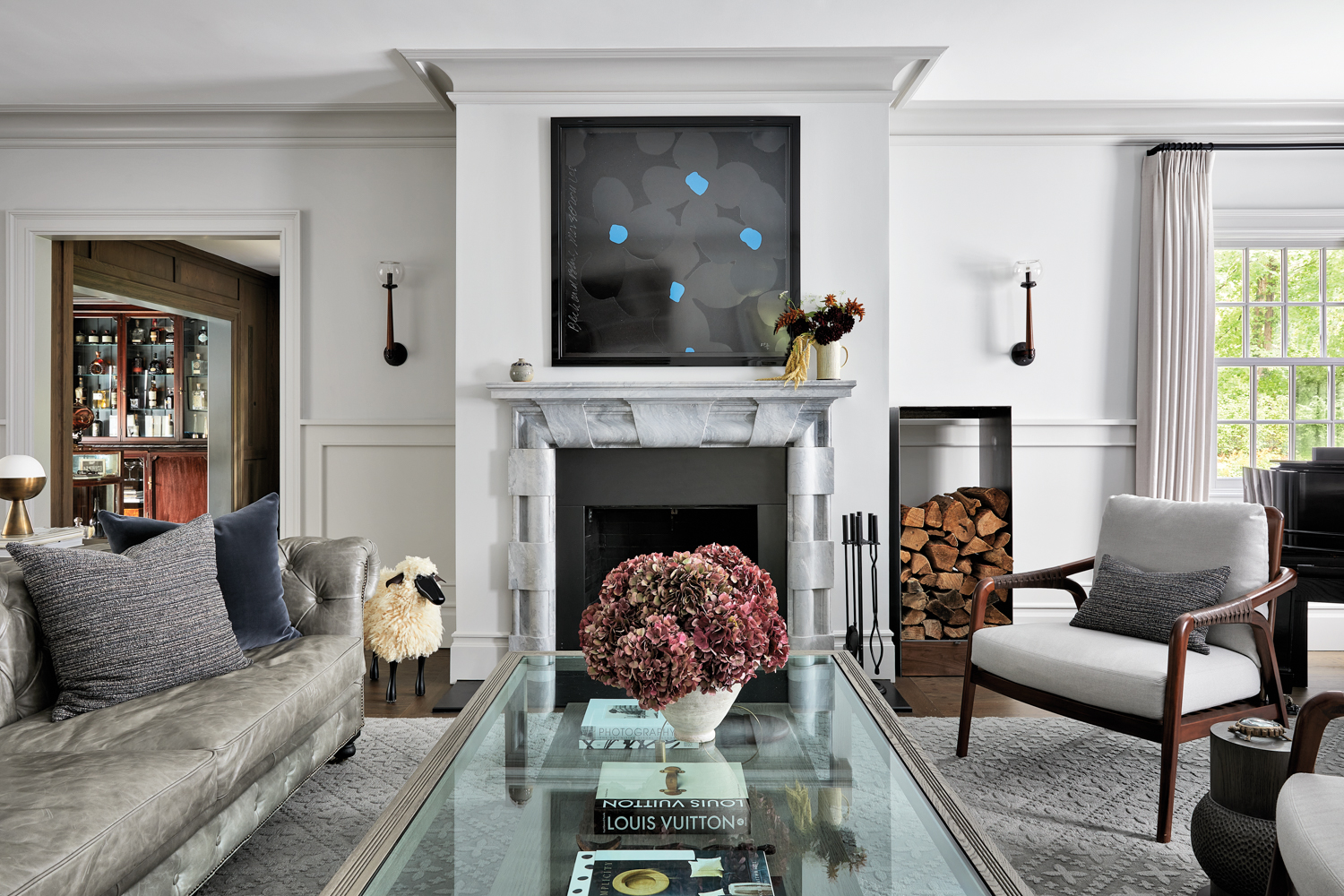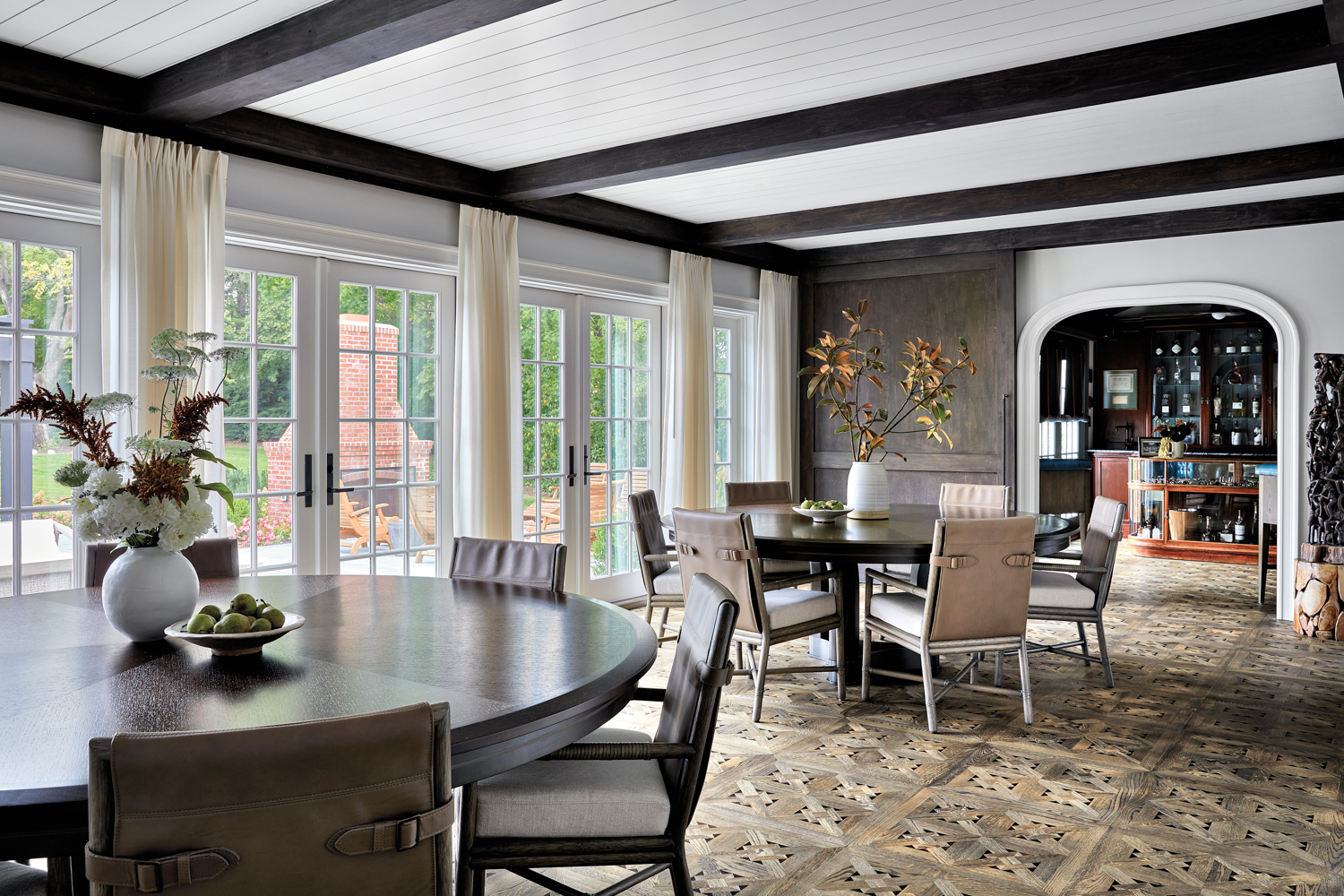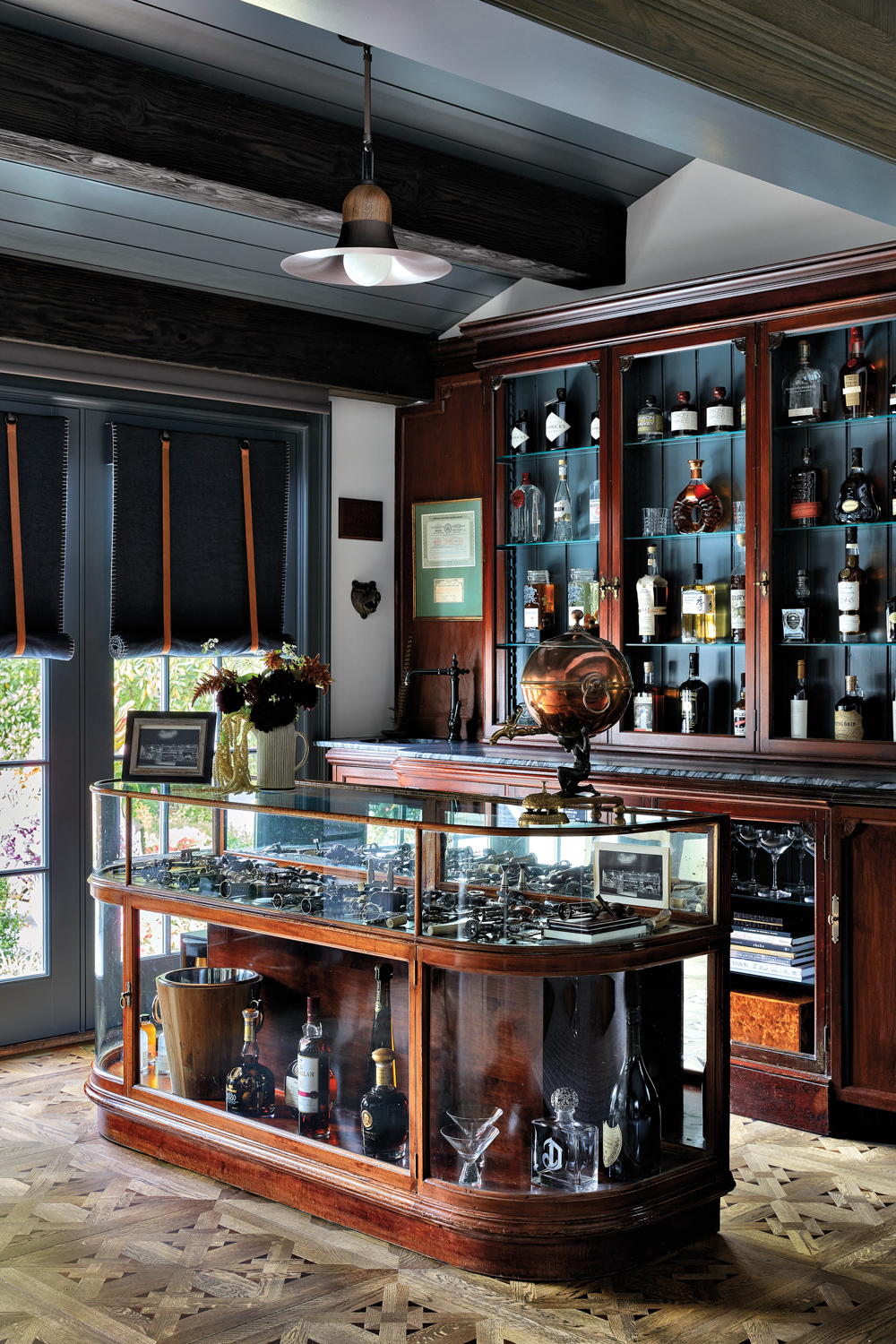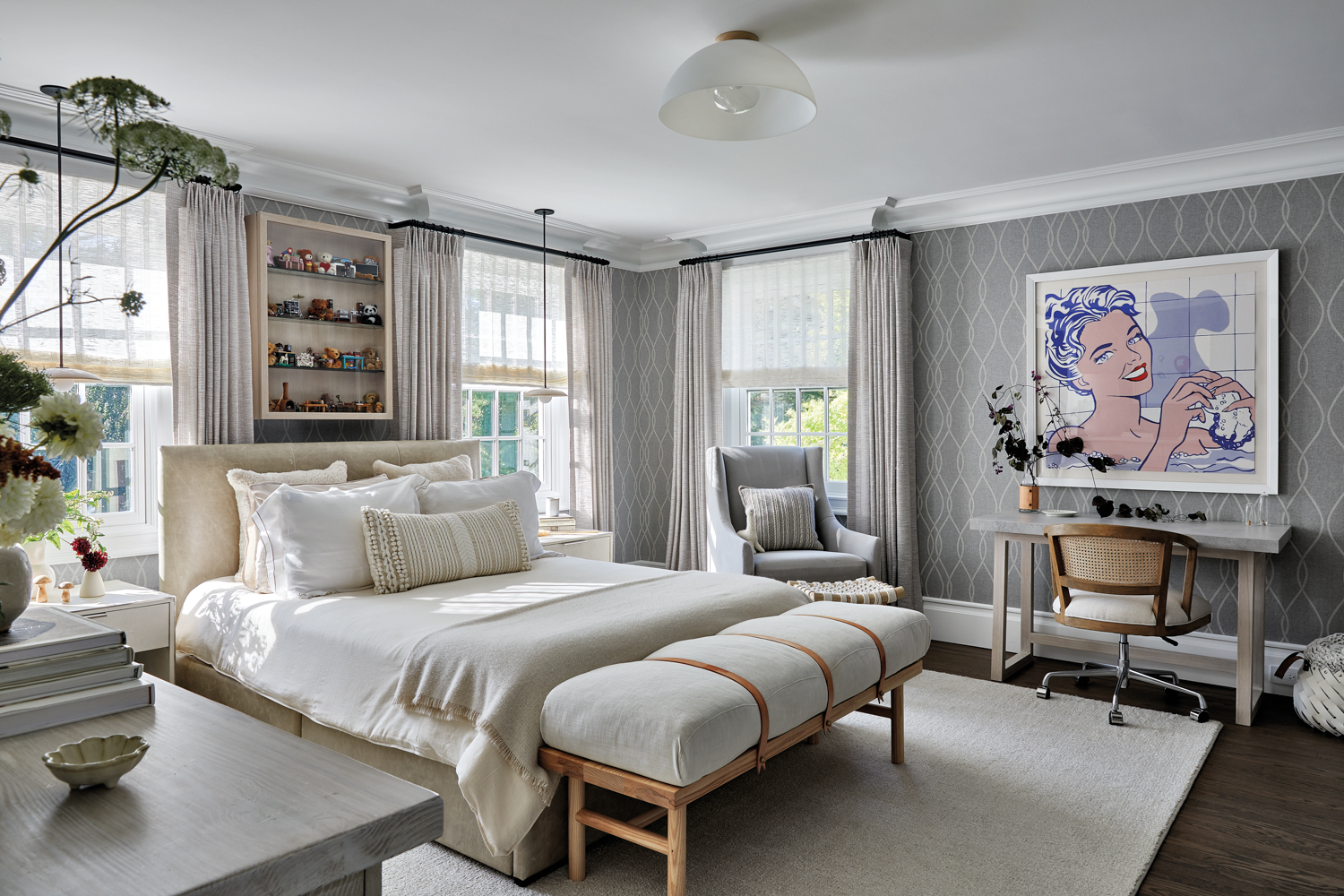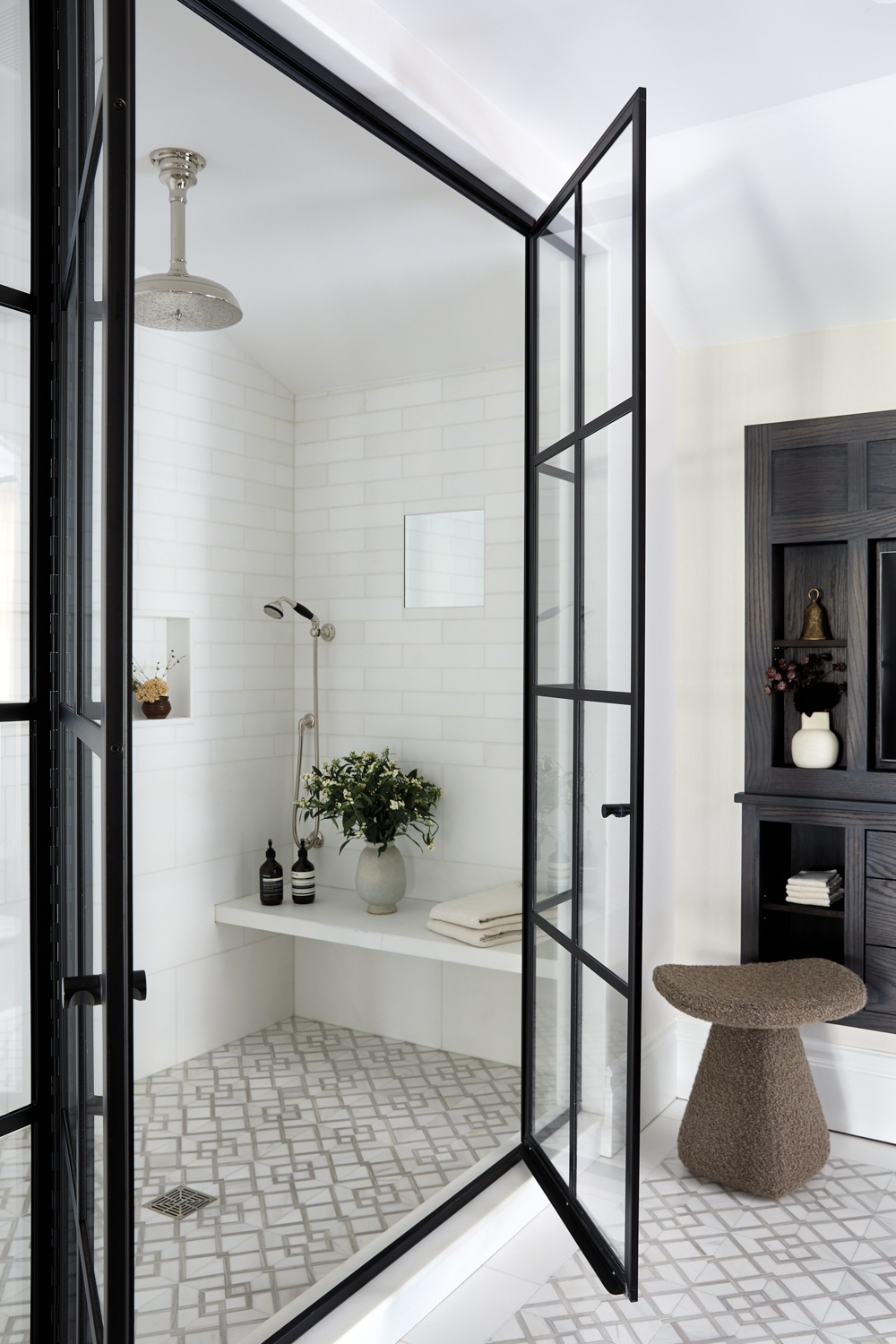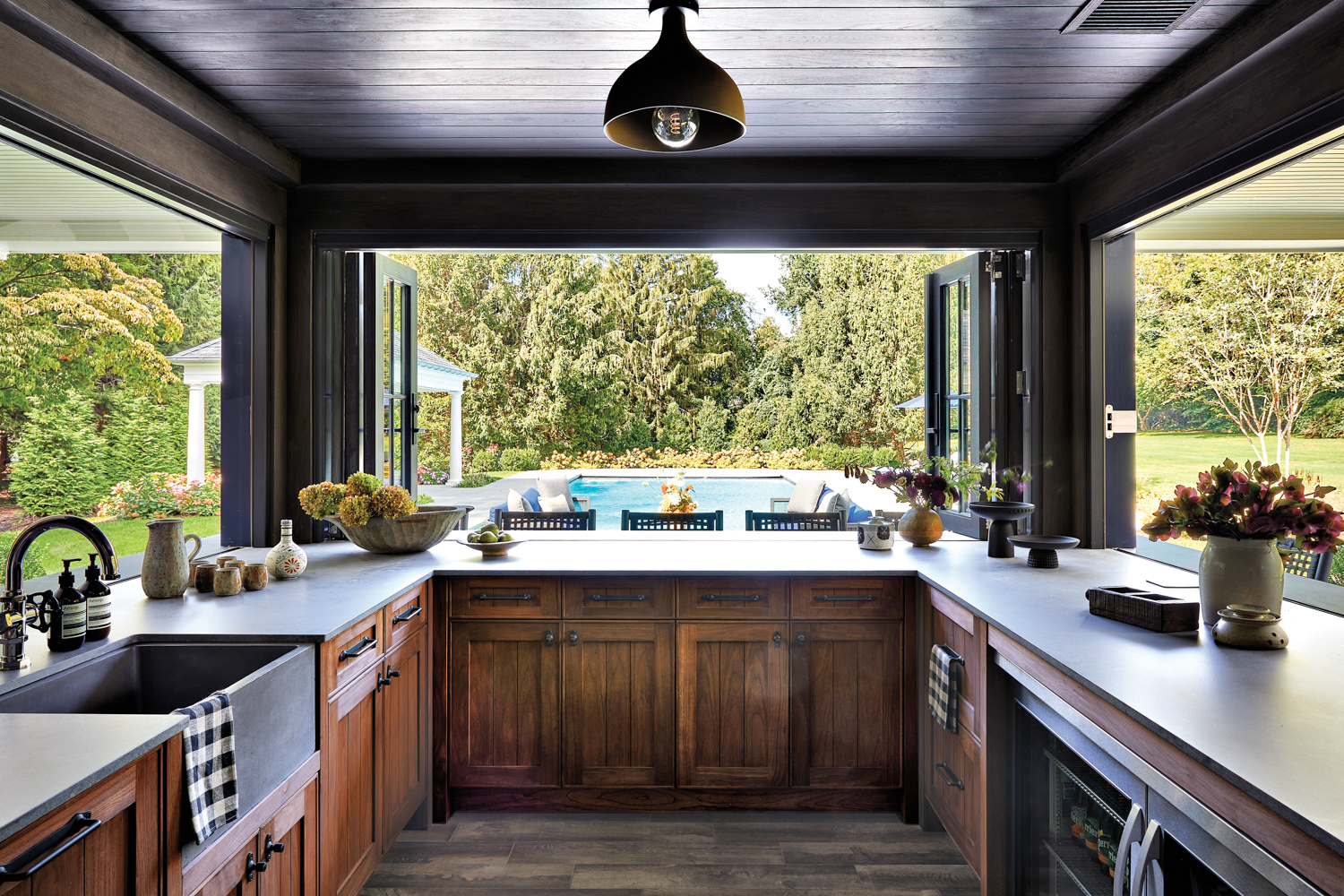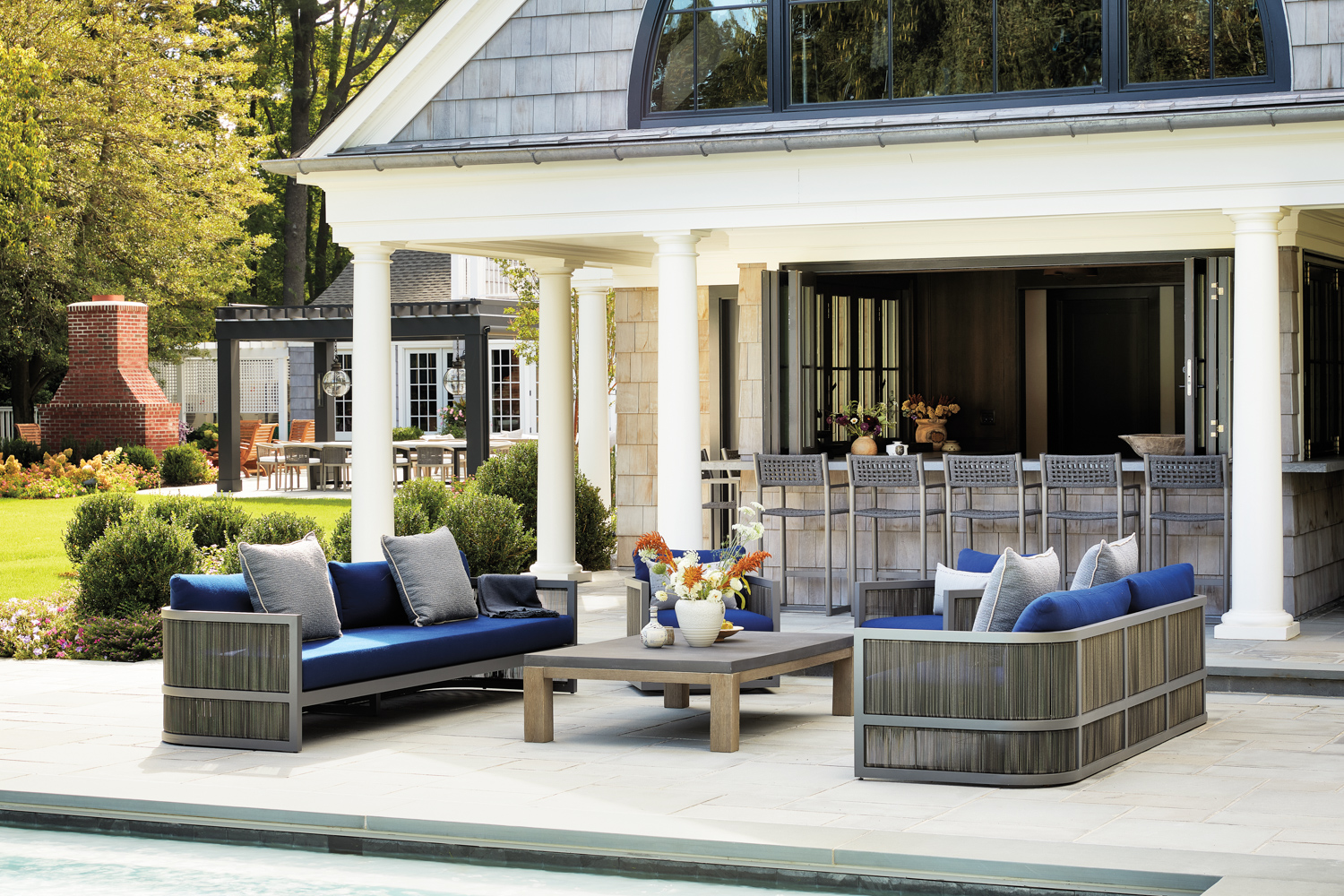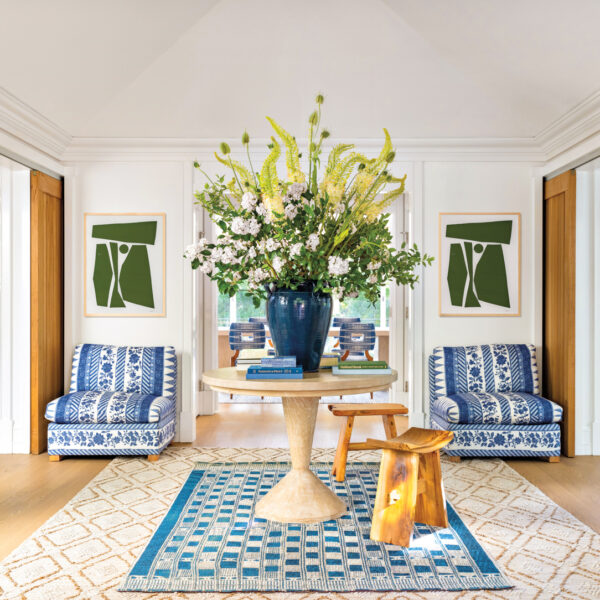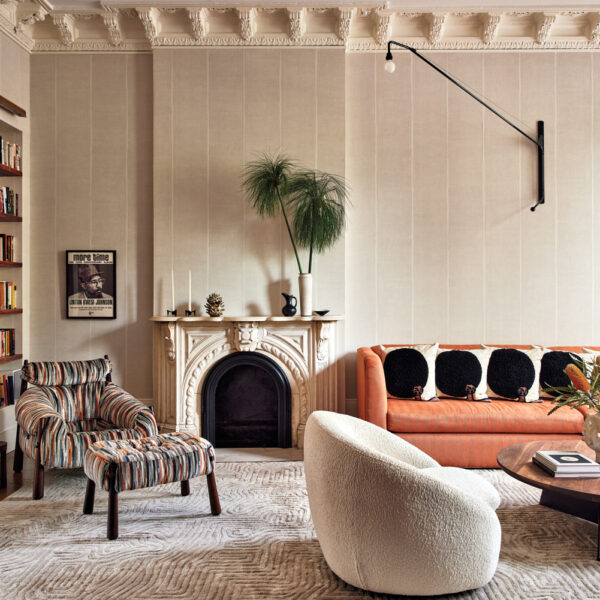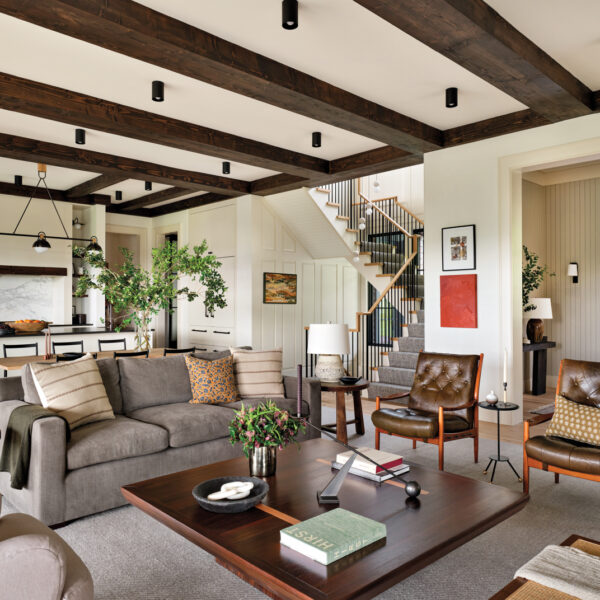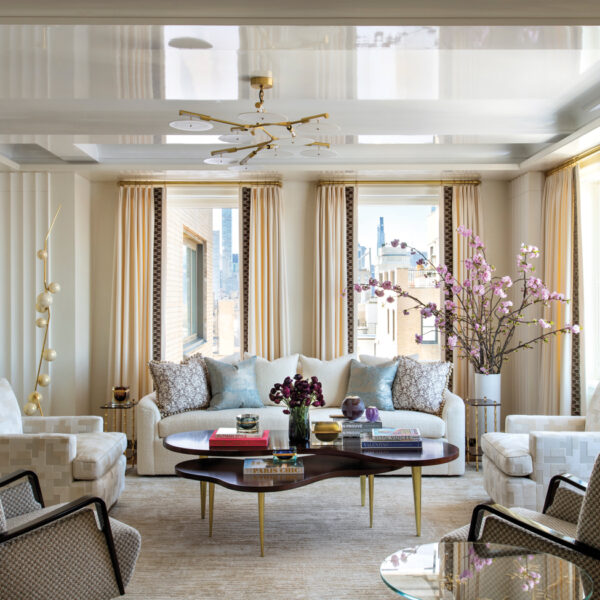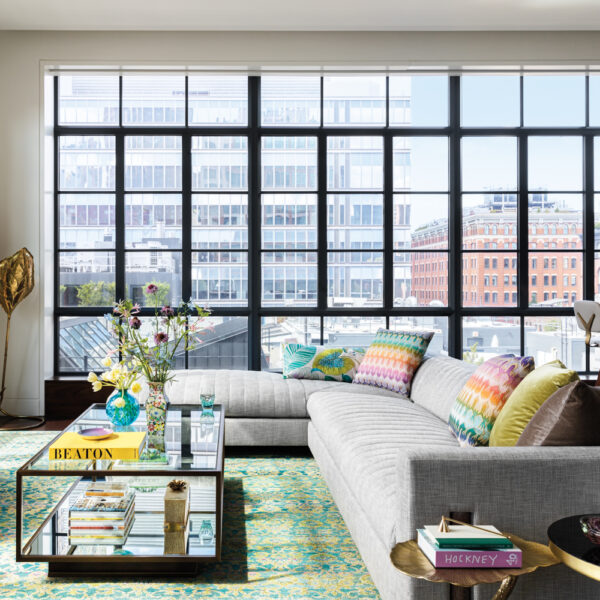Sometimes the smallest twists of fate have the biggest impacts. Take Becky Shea’s first major renovation as a young designer, which came to be after a future client overheard her in animated conversation on the subject of kitchens. Impressed with her know-how, he invited Shea to pitch a scheme for his brother’s recently purchased West Village maisonette. Little did she know that job would lead to designing multiple homes for the family and, eventually, to reconceiving their sprawling weekend residence in Old Brookville, Long Island.
This wasn’t just any old weekend place, either. The clients had purchased the 1928 Colonial-style dwelling shortly after marrying and raised their kids there before transitioning to Manhattan full-time. It was their dream that the property would serve as an escape from the city for their adult children, grandchildren and beyond. As Shea puts it, this was to be “the family HQ for the rest of their lives.”
For vacation home ideation, the homeowners looked no further than their favorite place to take one: Twin Farms, a rustic yet luxurious inn tucked away in central Vermont. “They have very hectic lives, but they’ve always felt a deep connection to that spot in the middle of nature. It’s where they go to find peace,” says Shea. The owners even invited the designer and her husband and chief operating officer, Jake, to spend a week at the resort to fully immerse themselves in its ethos.
Shea returned to Old Brookville inspired. Alongside architect Andrew Fethes and general contractor Rob Amoroso, she set about reconceiving the property to capture a similar sense of bucolic tranquility, but with a dose of urban swagger and all the comforts of a modern family compound. For these entertaining-inclined clients, that centered around an enviable hospitality program. An artful eat-in kitchen, a formal pantry, a double dining hall and—the crown jewel of numerous gathering spaces—a salon replete with a grand piano are all cornerstones of the extensive renovation.
Throughout, Shea’s custom architectural detailing and millwork underscore the home’s emphasis on one-of-a-kind design. One heroic mention is the intricate inlaid flooring flowing from the kitchen through the dining hall. Inspired by a patterned floor she spied at a Paris flea market, the designer hand-drew the motif, specified the various woods to be used and commissioned an Amish craftsperson in Pennsylvania to produce it. “Ninety-five percent of what’s in this home is built by makers from the United States,” she says. “Finding those artisans—in California, Pennsylvania, upstate New York, North Carolina—and bringing these different worlds together in a holistic way within the space drove the aesthetic.”
To balance the pastoral undercurrent, Shea brought in plenty of leather and steel accents (“my signatures,” she quips) along with touches of concrete, all homages to the family’s urban roots. “I wanted to weave in brutalist New York industrial materials with more rustic details,” the designer explains. She then employed a classic palette of muted neutrals contrasted by deep navy, olive green and black. And, to lace the rooms together, Shea subtly repeated materials. For instance, she incorporated cognac leather touches in the kitchen, family room and bedrooms, and used the same bed linens in different dyes, as well as similar wools for rugs and blankets.
While the renovation was a near-complete overhaul of the existing framework, the designer made sure that nods to the family’s history were plenty. She managed to salvage most of the original hardwood floors and rehabilitated several sinks and vanities that used to be in the kids’ bathrooms when they were growing up. In the room nicknamed “the speakeasy” is a floating island cabinet—formerly the cashier counter in a great uncle’s liquor store during the Prohibition—which now showcases a collection of bar paraphernalia.
“When you’re creating a home like this, storytelling is very important,” says Shea. “If it’s intended to be multigenerational, you want the next generation to feel proud of what they have—and to know who it’s connected to.”

